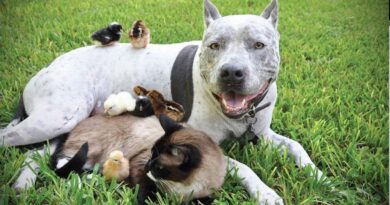O que é confident walking
What is Confident Walking?
Confident walking refers to a specific technique used in dog training that emphasizes the importance of a dog walking calmly and assertively alongside its owner. This method not only enhances the bond between the dog and the owner but also promotes good behavior in various environments. When a dog walks confidently, it reflects a sense of security and trust in its handler, making it an essential aspect of responsible pet ownership.
The Importance of Body Language
Body language plays a crucial role in confident walking. Dogs are highly attuned to the non-verbal cues of their owners. When an owner walks with purpose and confidence, the dog is likely to mirror this behavior. This synchronization can lead to a more enjoyable walking experience, reducing anxiety and promoting a sense of calm. Understanding how to convey confidence through posture and movement is vital for effective dog training.
Techniques to Encourage Confident Walking
To encourage confident walking, owners can implement several techniques. First, using a well-fitted harness or collar can help control the dog without causing discomfort. Additionally, practicing loose-leash walking can prevent pulling and create a more enjoyable experience for both the dog and the owner. Positive reinforcement, such as treats or praise, can also motivate the dog to maintain a confident walking pace.
Benefits of Confident Walking
There are numerous benefits associated with confident walking. For one, it helps to establish leadership and structure within the dog-owner relationship. This structure can lead to improved obedience and reduced behavioral issues. Furthermore, confident walking can enhance socialization skills, allowing dogs to interact more positively with other dogs and people they encounter during walks.
Common Challenges in Achieving Confident Walking
While confident walking is desirable, there can be challenges in achieving it. Some dogs may exhibit fear or anxiety in new environments, leading to pulling or lagging behind. Others may become overly excited, making it difficult to maintain a steady pace. Identifying these challenges and addressing them through gradual exposure and training can help dogs learn to walk confidently.
Using Positive Reinforcement
Positive reinforcement is a powerful tool in training dogs for confident walking. By rewarding desired behaviors, such as walking calmly beside the owner, dogs are more likely to repeat those actions. Treats, verbal praise, and affection can all serve as effective rewards. This approach not only encourages good behavior but also strengthens the bond between the dog and its owner.
Creating a Routine
Establishing a consistent walking routine can significantly contribute to a dog’s confidence. Regular walks at the same time each day help dogs understand what to expect, reducing anxiety. Additionally, varying the walking routes can expose dogs to different environments, helping them to adapt and build confidence in unfamiliar situations.
The Role of Socialization
Socialization is a key component of confident walking. Exposing dogs to various stimuli, such as other dogs, people, and different environments, can help them become more comfortable and confident. This exposure should be gradual and positive, allowing dogs to learn how to navigate their surroundings without fear or aggression.
Monitoring Progress
Monitoring a dog’s progress in confident walking is essential for effective training. Owners should take note of improvements, such as reduced pulling or increased calmness during walks. Keeping a journal or using a training app can help track these changes and identify areas that may need further attention. Celebrating small victories can also motivate both the owner and the dog to continue their training journey.



